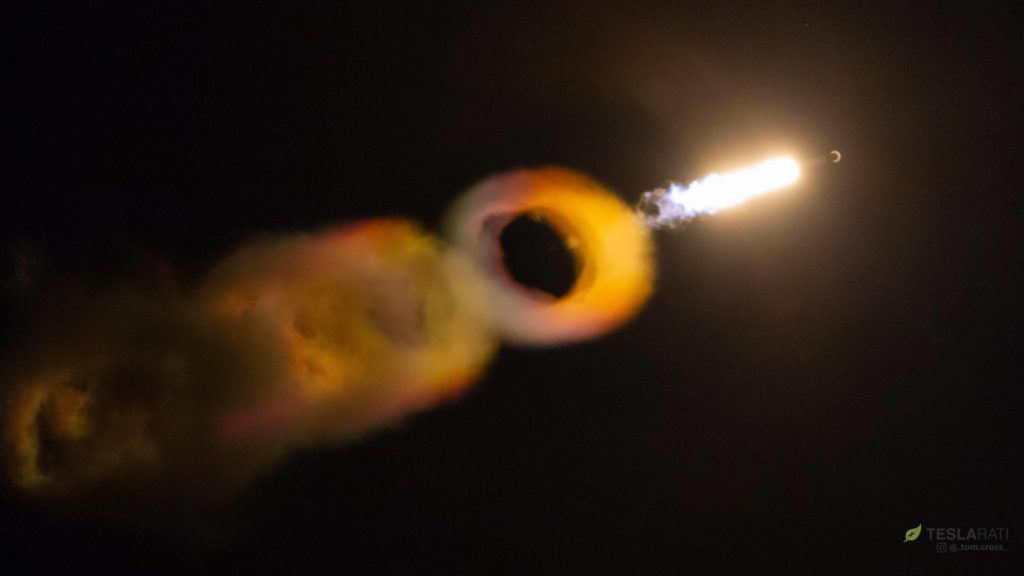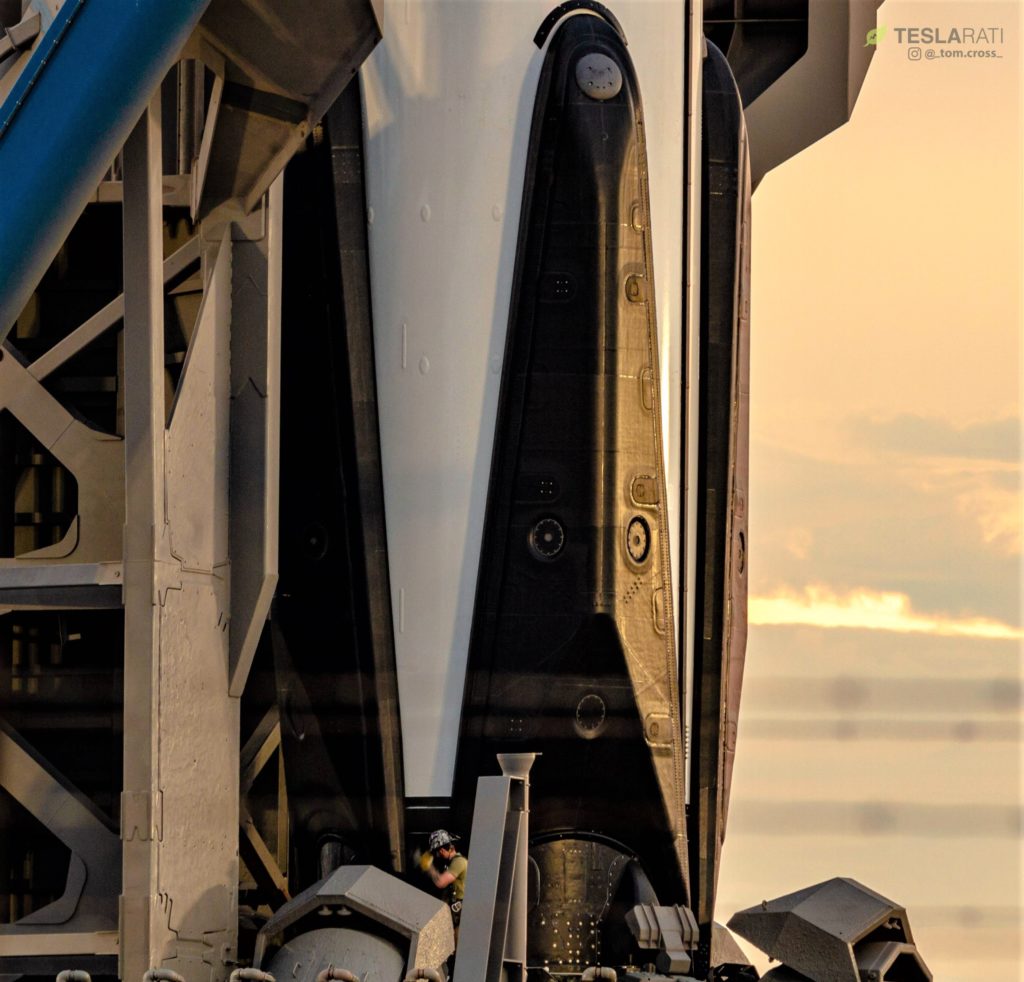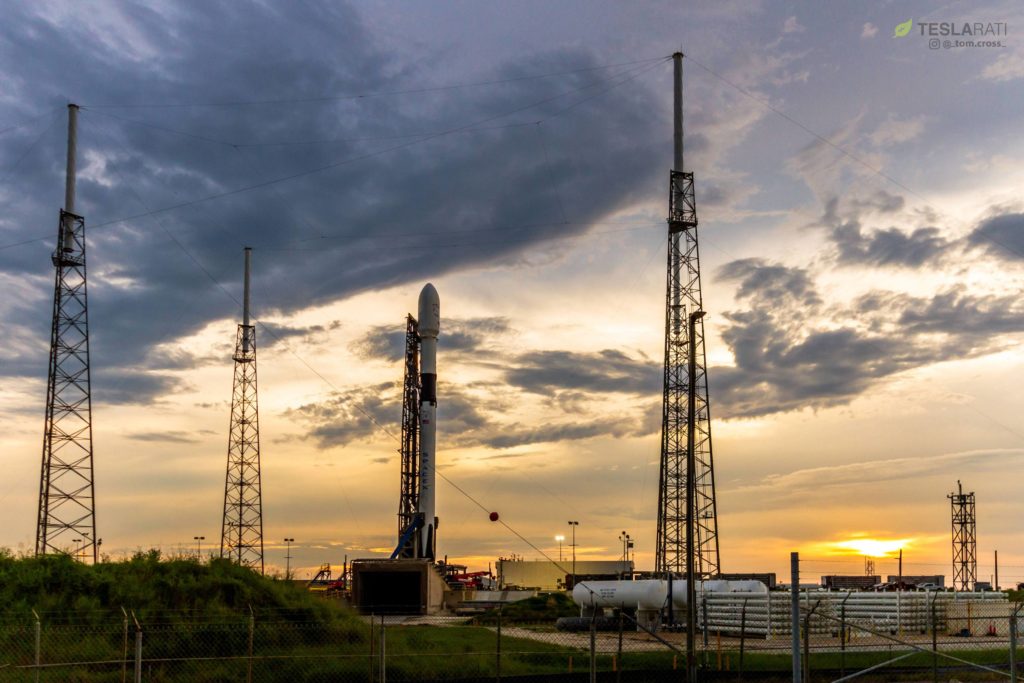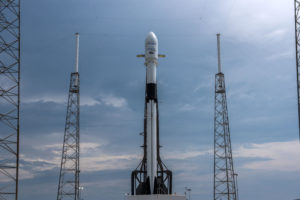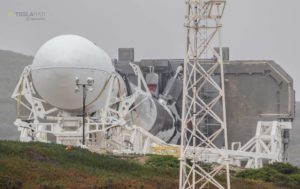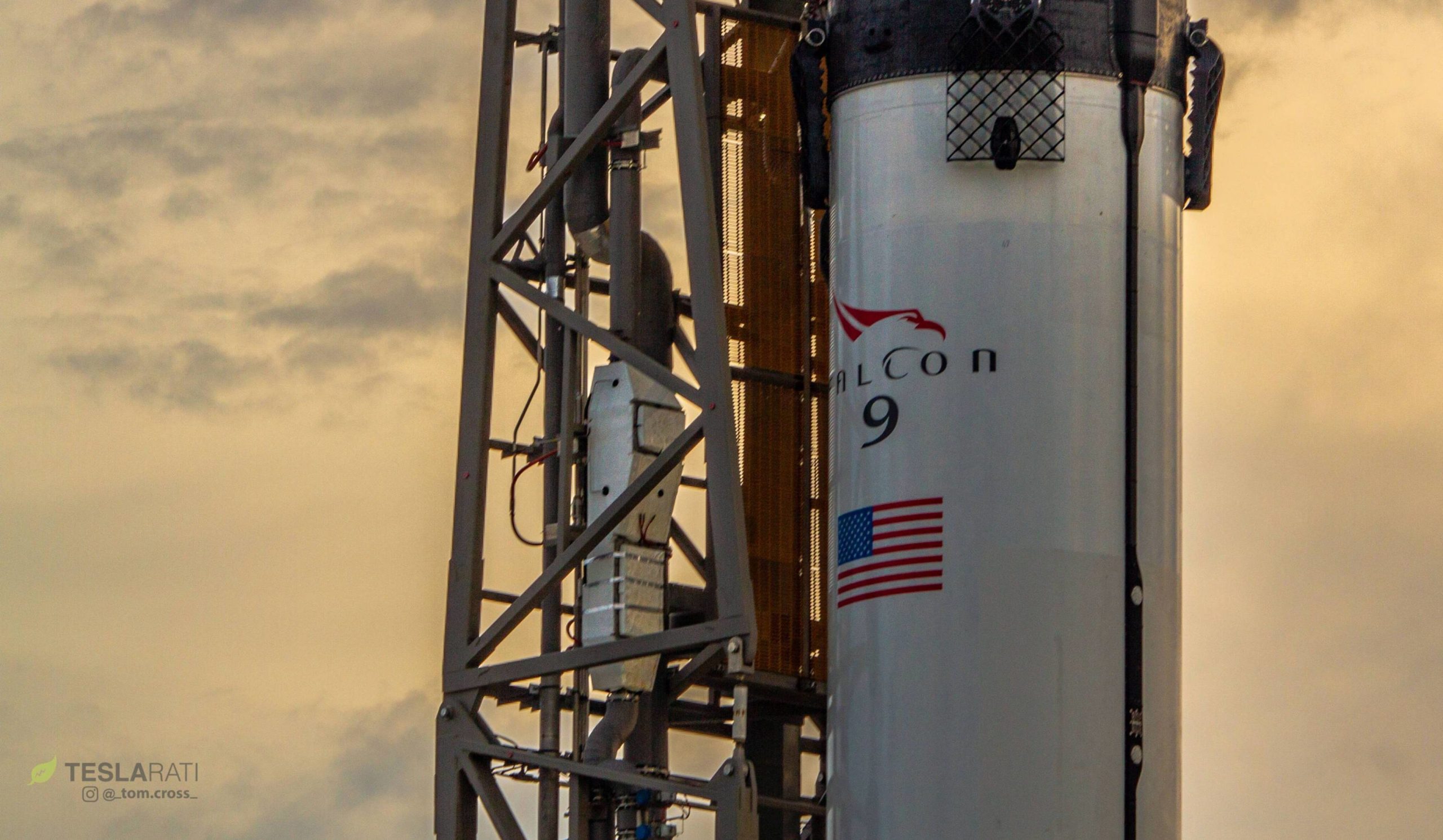
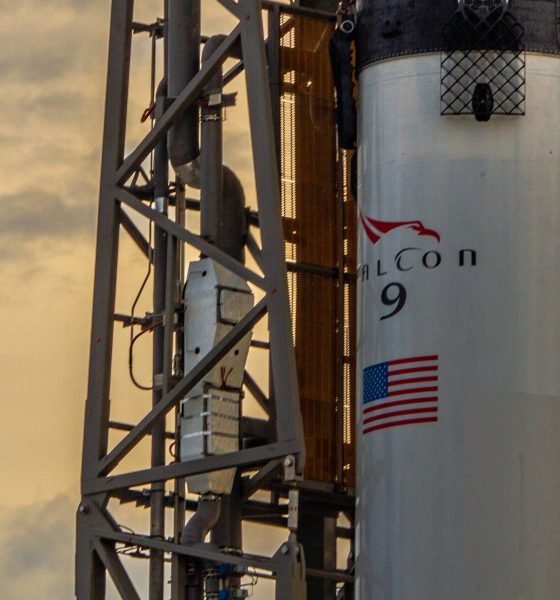
News
SpaceX delivers largest commercial satellite in kick off of Falcon 9 marathon
SpaceX has successfully completed its 13th launch of 2018, kicking off a marathon of three new Falcon 9 Block 5 booster debuts with the launch of the Telstar 19V communications satellite, potentially breaking the record for the largest commercial satellite ever launched at 7000 kg (15,500 lb).
Despite the heft of its payload and partially thanks to a slightly lower parking orbit for the satellite, Falcon 9 booster B1047 – the second Block 5 booster to roll off the assembly line – managed to successfully land aboard the autonomous spaceport drone ship (ASDS) Of Course I Still Love You (OCISLY), stationed approximately 650 km (400 mi) off the Florida coast at launch time.
While the booster was unable to maintain a live video feed through its high-speed reentry and Atlantic landing, SpaceX’s cameras on OCISLY managed to reconnect a few seconds after touchdown to show the 50-meter (160-foot) tall rocket safely resting on the drone ship. As the webcast host noted, Falcon 9 Block 5 features a number of prominent upgrades designed to enable levels of reusability and reliability essentially unprecedented in the world of orbital rocketry.
- B1047 created an extraordinary ring vortex rainbow as it smashed through Max Q, the point of highest aerodynamic stress on the rocket. (Tom Cross)
- B1047 before the launch of Telstar 19V. (Tom Cross)
- B1047 before the launch of Telstar 19V. (Tom Cross)
- B1047 before the launch of Telstar 19V. (Tom Cross)
Rocket trials
Now more than two months after the first Block 5 booster’s – B1046 – debut in May 2018, the software engineer hosting SpaceX’s Telstar 19V webcast was likely speaking more from a place of experience than of hope. Per CEO Elon Musk’s press call just prior to Block 5’s debut, he noted that SpaceX intended to conduct an extensive analysis of that pathfinder booster, including significant disassembly and perhaps some limited destructive testing of certain critical or high-risk components. Musk didn’t expect B1046 to fly for at least another “couple of months”.
This is critical because SpaceX’s manifest over the next several weeks is fairly aggressive – Iridium-7 is scheduled to lift off from Vandenberg, CA three days from today (July 25th), the next Florida launch is aiming for a static fire next weekend and a launch NET 1:19 am EDT August 2, and the second imminent Florida mission is penciled in for launch NET 11:35 pm EDT August 17. Those rapid-fire Florida launches will push both SpaceX’s pad and drone ship turnaround capabilities to their limits, requiring almost non-stop work to ensure both are available for the next mission in two weeks or less.
- SpaceX’s West Coast landing zone is preparing for its debut, currently NET October 6th 2018. (Pauline Acalin/Teslarati)
- Falcon 9 B1047 prepped for launch at Pad 40, July 21. (SpaceX)
- Prior to liftoff, Falcon 9 and Falcon Heavy are held down by massive “hold-down clamps” at the rocket’s base. Even after engine ignition, those clamps only release once the flight computer decides that the rocket is healthy. (Pauline Acalin)
Not to be (at least relatively) one-upped, SpaceX’s Vandenberg launch pad – known as SLC-4E – is scheduled to push its own turnaround limits by flying two missions in roughly 40 days, just shy of the current SpaceX record of 36 days between launches. Perhaps more excitingly, that September 4 SAOCOM 1A mission looks like a prime candidate for the debut of SpaceX’s yet-unused Californian landing zone, barely spitting distance from the SLC-4E launch pad.
Still, the question remains: what boosters are going to launch these four missions?
- B1051 is not believed to have left the Hawthorne, CA factory yet, and has been stated by NASA to be reserved for the first uncrewed Crew Dragon mission (DM-1), unlikely to occur before Q4 2018.
- B1050 is currently on-stand in McGregor, TX and is likely to be shipped to a launch pad within a week or two.
- B1049 was almost certainly shipped to Florida to support either of the two upcoming August launches.
- B1048 will launch Iridium-7 on July 25, land on Just Read The Instructions, and likely remain in California for future VAFB missions.
- B1047 just successfully launched Telstar 19V (July 22) and will be brought back to Port Canaveral over the next several days before heading to one of SpaceX’s Florida refurbishment facilities, presumably to prepare for an imminent future launch.
- B1046 is likely disassembled in Hawthorne, CA, unable to support a launch for another few weeks – perhaps it’s nearly ready, however
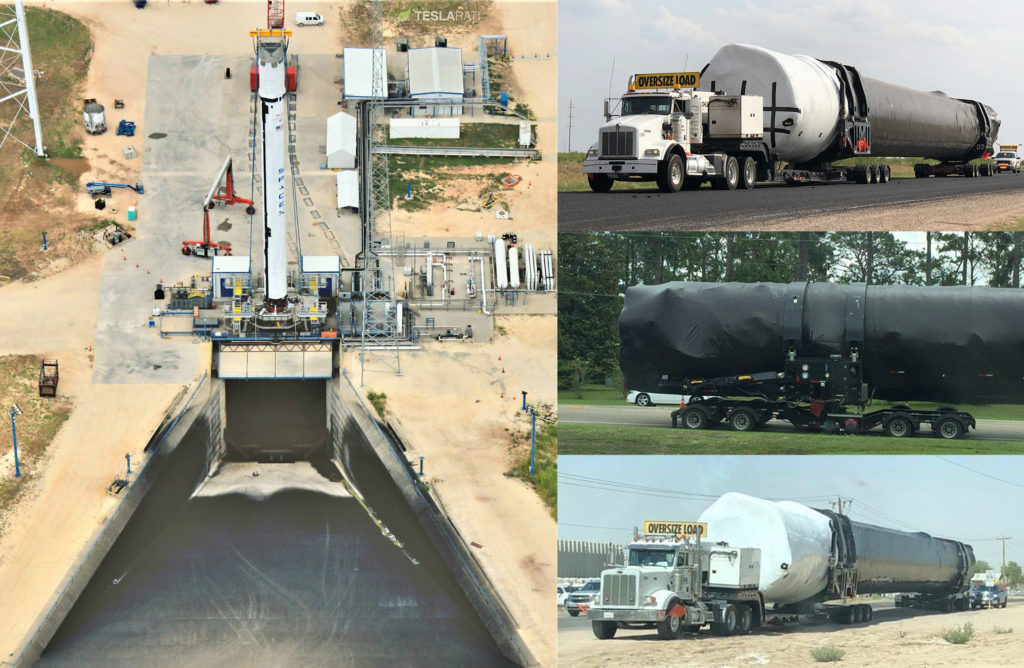
Three Falcon 9 boosters captured in various states of transport and testing over the last six weeks, two of which are B1047 and B1048. (Teslarati/Tesla Motors Club/Reddit/Facebook)
Put simply, it seems almost impossible for SpaceX to accomplish its ambitious manifest over the next 4-6 weeks without reusing a freshly-recovered Falcon 9 Block 5 booster. B1046 is a possibility, as is B1047 or B1048, although the latter two options would smash SpaceX’s previous record for Falcon booster turnaround (~70 days) by more than half, requiring in a return to shore, refurbishment or nondestructive analysis, and preparation for a static fire in as few as ~14-21 days.
Regardless, B1047’s successful Telstar 19V launch and landing have kicked off what is bound to be an extremely exciting period for SpaceX and its aspirations of highly-reusable rocketry.
Follow us for live updates, peeks behind the scenes, and photos from Teslarati’s East and West Coast photographers
Teslarati – Instagram – Twitter
Tom Cross – Twitter
Pauline Acalin – Twitter
Eric Ralph – Twitter

News
Tesla FSD fleet is nearing 7 billion total miles, including 2.5 billion city miles
As can be seen on Tesla’s official FSD webpage, vehicles equipped with the system have now navigated over 6.99 billion miles.

Tesla’s Full Self-Driving (Supervised) fleet is closing in on almost 7 billion total miles driven, as per data posted by the company on its official FSD webpage.
These figures hint at the massive scale of data fueling Tesla’s rapid FSD improvements, which have been quite notable as of late.
FSD mileage milestones
As can be seen on Tesla’s official FSD webpage, vehicles equipped with the system have now navigated over 6.99 billion miles. Tesla owner and avid FSD tester Whole Mars Catalog also shared a screenshot indicating that from the nearly 7 billion miles traveled by the FSD fleet, more than 2.5 billion miles were driven inside cities.
City miles are particularly valuable for complex urban scenarios like unprotected turns, pedestrian interactions, and traffic lights. This is also the difference-maker for FSD, as only complex solutions, such as Waymo’s self-driving taxis, operate similarly on inner-city streets. And even then, incidents such as the San Francisco blackouts have proven challenging for sensor-rich vehicles like Waymos.
Tesla’s data edge
Tesla has a number of advantages in the autonomous vehicle sector, one of which is the size of its fleet and the number of vehicles training FSD on real-world roads. Tesla’s nearly 7 billion FSD miles then allow the company to roll out updates that make its vehicles behave like they are being driven by experienced drivers, even if they are operating on their own.
So notable are Tesla’s improvements to FSD that NVIDIA Director of Robotics Jim Fan, after experiencing FSD v14, noted that the system is the first AI that passes what he described as a “Physical Turing Test.”
“Despite knowing exactly how robot learning works, I still find it magical watching the steering wheel turn by itself. First it feels surreal, next it becomes routine. Then, like the smartphone, taking it away actively hurts. This is how humanity gets rewired and glued to god-like technologies,” Fan wrote in a post on X.
News
Tesla starts showing how FSD will change lives in Europe
Local officials tested the system on narrow country roads and were impressed by FSD’s smooth, human-like driving, with some calling the service a game-changer for everyday life in areas that are far from urban centers.

Tesla has launched Europe’s first public shuttle service using Full Self-Driving (Supervised) in the rural Eifelkreis Bitburg-Prüm region of Germany, demonstrating how the technology can restore independence and mobility for people who struggle with limited transport options.
Local officials tested the system on narrow country roads and were impressed by FSD’s smooth, human-like driving, with some calling the service a game-changer for everyday life in areas that are far from urban centers.
Officials see real impact on rural residents
Arzfeld Mayor Johannes Kuhl and District Administrator Andreas Kruppert personally tested the Tesla shuttle service. This allowed them to see just how well FSD navigated winding lanes and rural roads confidently. Kruppert said, “Autonomous driving sounds like science fiction to many, but we simply see here that it works totally well in rural regions too.” Kuhl, for his part, also noted that FSD “feels like a very experienced driver.”
The pilot complements the area’s “Citizen Bus” program, which provides on-demand rides for elderly residents who can no longer drive themselves. Tesla Europe shared a video of a demonstration of the service, highlighting how FSD gives people their freedom back, even in places where public transport is not as prevalent.
What the Ministry for Economic Affairs and Transport says
Rhineland-Palatinate’s Minister Daniela Schmitt supported the project, praising the collaboration that made this “first of its kind in Europe” possible. As per the ministry, the rural rollout for the service shows FSD’s potential beyond major cities, and it delivers tangible benefits like grocery runs, doctor visits, and social connections for isolated residents.
“Reliable and flexible mobility is especially vital in rural areas. With the launch of a shuttle service using self-driving vehicles (FSD supervised) by Tesla in the Eifelkreis Bitburg-Prüm, an innovative pilot project is now getting underway that complements local community bus services. It is the first project of its kind in Europe.
“The result is a real gain for rural mobility: greater accessibility, more flexibility and tangible benefits for everyday life. A strong signal for innovation, cooperation and future-oriented mobility beyond urban centers,” the ministry wrote in a LinkedIn post.
News
Tesla China quietly posts Robotaxi-related job listing
Tesla China is currently seeking a Low Voltage Electrical Engineer to work on circuit board design for the company’s autonomous vehicles.

Tesla has posted a new job listing in Shanghai explicitly tied to its Robotaxi program, fueling speculation that the company is preparing to launch its dedicated autonomous ride-hailing service in China.
As noted in the listing, Tesla China is currently seeking a Low Voltage Electrical Engineer to work on circuit board design for the company’s autonomous vehicles.
Robotaxi-specific role
The listing, which was shared on social media platform X by industry watcher @tslaming, suggested that Tesla China is looking to fill the role urgently. The job listing itself specifically mentions that the person hired for the role will be working on the Low Voltage Hardware team, which would design the circuit boards that would serve as the nervous system of the Robotaxi.
Key tasks for the role, as indicated in the job listing, include collaboration with PCB layout, firmware, mechanical, program management, and validation teams, among other responsibilities. The role is based in Shanghai.
China Robotaxi launch
China represents a massive potential market for robotaxis, with its dense urban centers and supportive policies in select cities. Tesla has limited permission to roll out FSD in the country, though despite this, its vehicles have been hailed as among the best in the market when it comes to autonomous features. So far, at least, it appears that China supports Tesla’s FSD and Robotaxi rollout.
This was hinted at in November, when Tesla brought the Cybercab to the 8th China International Import Expo (CIIE) in Shanghai, marking the first time that the autonomous two-seater was brought to the Asia-Pacific region. The vehicle, despite not having a release date in China, received a significant amount of interest among the event’s attendees.
